In 2025, the demand for portable sewing solutions has surged, driven by the DIY trend and technological advancements. This article provides an in-depth analysis of handheld sewing machines, covering market dynamics, performance benchmarks, consumer behavior shifts, and more. Professional buyers will find valuable insights to aid in selecting the best handheld sewing machines for their inventory.
Table of Contents:
– Market Overview of Handheld Sewing Machines
– Detailed Market Analysis of Handheld Sewing Machines
– Key Factors When Selecting a Handheld Sewing Machine
– Evaluating the Durability and Build Quality of Handheld Sewing Machines
– Importance of Safety Standards and Certifications
– Latest Technology Features in Handheld Sewing Machines
– Assessing the Price Range and Budget Considerations
– Conclusion
Market Overview of Handheld Sewing Machines
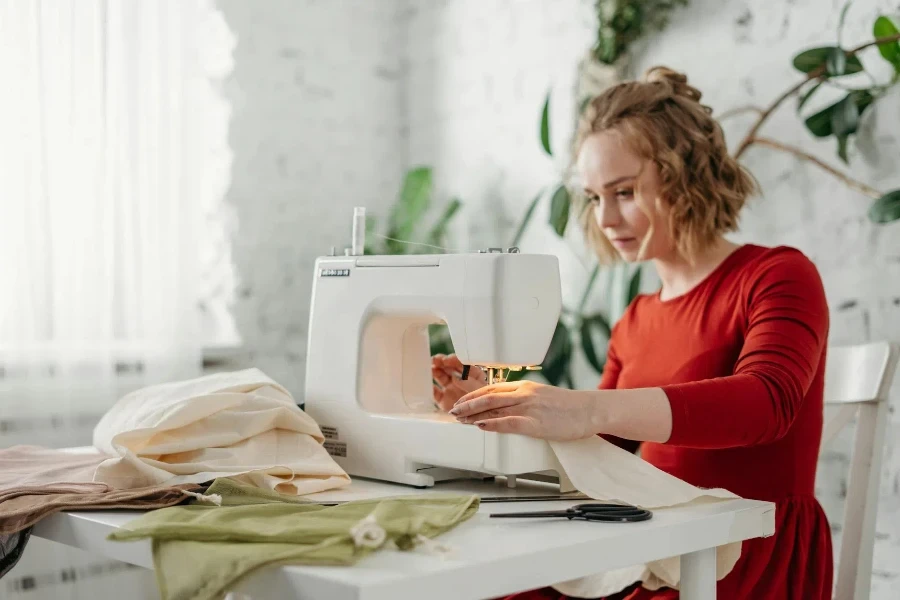
The handheld sewing machine market has seen significant growth in recent years, driven by the rising demand for portable and convenient sewing solutions. In 2024, the global sewing machine market was worth USD 5.34 billion and is projected to grow at a compound annual growth rate (CAGR) of 5.75%, reaching USD 7.51 billion by 2030. Handheld sewing machines, as a subset of this market, are expected to contribute notably to this growth due to their affordability and ease of use.
The Americas and Asia-Pacific regions are leading the market, with high demand in the United States, China, and India. The surge in DIY fashion and home decor has notably driven the demand for handheld sewing machines. Consumers in these regions prefer products that offer convenience and efficiency, aligning with the features of handheld sewing machines. The market is also witnessing a shift towards online sales channels, which accounted for over 30% of the distribution in 2024.
Technological advancements are another key driver, with innovations such as battery-operated and USB-rechargeable handheld sewing machines gaining popularity. These advancements enhance user experience by providing greater mobility and ease of use. As the market evolves, manufacturers are focusing on improving the durability and functionality of handheld sewing machines to meet diverse consumer needs.
Detailed Market Analysis of Handheld Sewing Machines
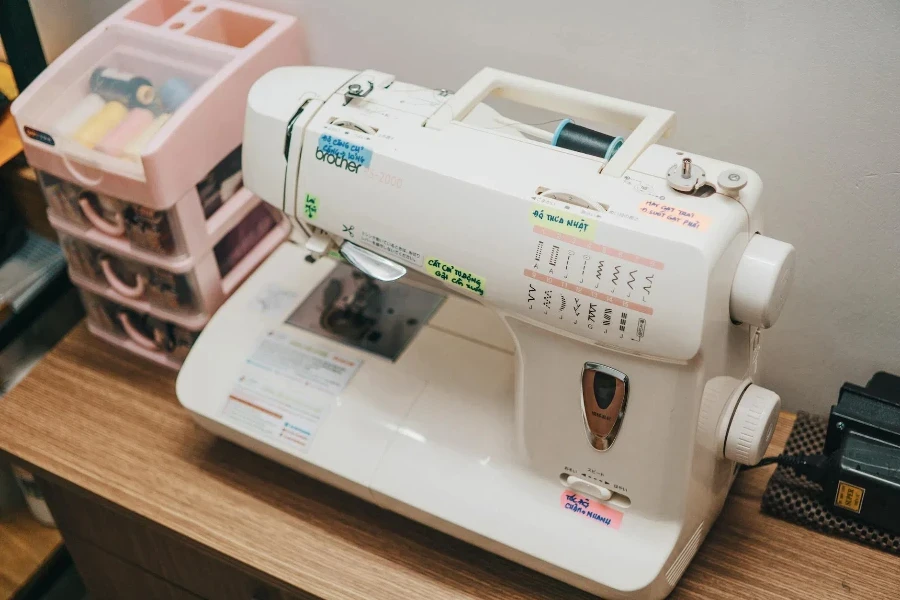
Handheld sewing machines have carved out a niche in the broader sewing machine market by offering unique advantages such as portability, ease of use, and affordability. These machines are particularly popular among hobbyists, DIY enthusiasts, and small business owners who require quick and efficient sewing solutions. The market dynamics for handheld sewing machines are influenced by several factors, including consumer behavior, technological innovations, and economic conditions.
Key Performance Benchmarks: Handheld sewing machines are evaluated based on stitch quality, battery life, ease of use, and portability. High-performance models can achieve stitch speeds of up to 300 stitches per minute, with battery life extending up to three hours of continuous use. These benchmarks are critical for consumers who prioritize efficiency and reliability in their sewing projects.
Market Share Dynamics: The handheld sewing machine market is highly competitive, with key players such as Singer, Brother, and Janome leading the market. In 2024, these companies collectively held over 60% of the market share. New entrants are also emerging, leveraging innovative designs and competitive pricing to capture market share. The increasing preference for online shopping has further intensified competition, with e-commerce platforms becoming a crucial distribution channel.
Consumer Behavior Shifts: There has been a noticeable shift in consumer behavior towards DIY and sustainable fashion. This trend has driven the demand for handheld sewing machines, as consumers seek tools that enable them to create and repair clothing at home. Additionally, the rising popularity of social media platforms, where DIY projects are widely shared, has contributed to the growing interest in handheld sewing machines.
Distribution Channel Preferences: The handheld sewing machine market has seen a significant shift towards online distribution channels. In 2024, online sales accounted for approximately 40% of the total market sales, up from 25% in the previous year. This shift is attributed to the convenience of online shopping, broader product selection, and competitive pricing. Major e-commerce platforms such as Amazon and Chovm play a pivotal role in this trend, offering consumers easy access to a wide range of handheld sewing machines.
Recent Innovations: Technological advancements have led to the development of more sophisticated handheld sewing machines. Innovations include features such as automatic threading, adjustable stitch lengths, and USB-rechargeable batteries. These advancements have enhanced the functionality and user experience of handheld sewing machines, making them more appealing to a broader audience.
Product Lifecycle Stages: Handheld sewing machines are typically in the growth stage of their product lifecycle. The increasing demand and continuous introduction of new models and features indicate a robust market expansion. Manufacturers are investing in research and development to enhance product performance and cater to the evolving needs of consumers.
Digitalization: The integration of digital technologies in handheld sewing machines is an emerging trend. Features such as digital stitch pattern selection, LED lighting, and mobile app connectivity are becoming more common. These digital enhancements improve the user experience and provide additional convenience, further driving market growth.
Customer Pain Points: Despite their advantages, handheld sewing machines are not without challenges. Common pain points include limited stitch options, lower power compared to traditional sewing machines, and shorter battery life. Addressing these issues through technological advancements and improved design is crucial for manufacturers to maintain consumer satisfaction and drive market growth.
Brand Positioning Strategies: Leading brands in the handheld sewing machine market focus on positioning their products as convenient, reliable, and affordable solutions for home sewing. Marketing strategies emphasize the portability and ease of use of handheld sewing machines, appealing to both novice and experienced users. Collaborations with influencers and DIY enthusiasts on social media platforms also play a significant role in brand positioning.
Differentiation Strategies: To stand out in the competitive market, manufacturers are adopting differentiation strategies such as offering unique features, superior customer service, and competitive pricing. Customizable stitch patterns, ergonomic designs, and extended warranties are some of the differentiating factors that attract consumers to specific brands.
Niche Markets: Handheld sewing machines cater to several niche markets, including travel enthusiasts, small business owners, and DIY hobbyists. These niche segments require portable and efficient sewing solutions, making handheld sewing machines an ideal choice. By targeting these specific markets, manufacturers can tap into additional revenue streams and enhance market penetration.
Key Factors When Selecting a Handheld Sewing Machine
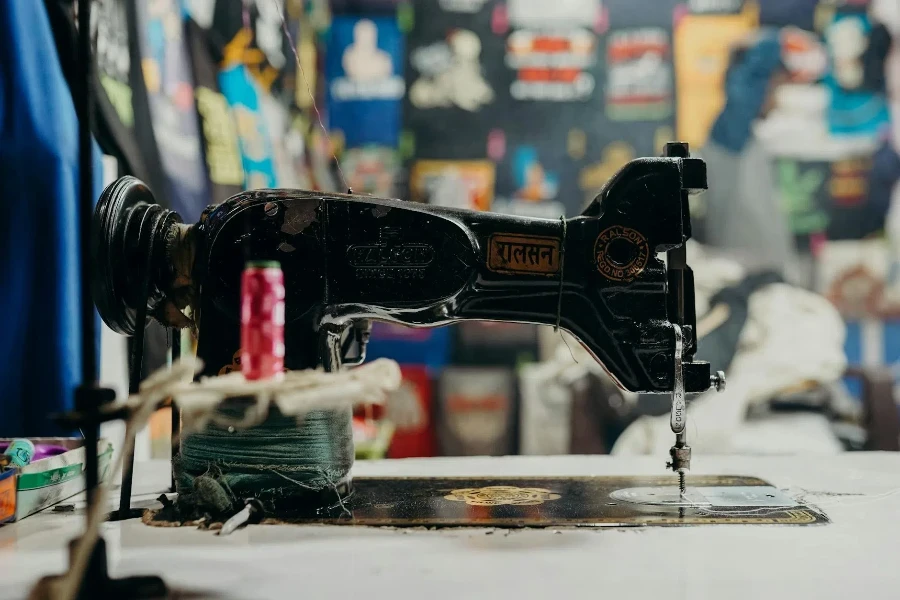
When choosing a handheld sewing machine, several critical factors must be considered to ensure optimal performance and suitability for your needs. These include types and styles, performance and functionality, design, technical specifications, and ease of use.
Types and Styles
Handheld sewing machines come in various types and styles, each designed for specific tasks and user preferences. The most common types are manual and electric models. Manual handheld sewing machines are typically more compact and lightweight, making them ideal for on-the-go repairs and quick fixes. These models require physical effort to operate, which can be a downside for some users.
Electric handheld sewing machines offer more power and efficiency. They are equipped with batteries or can be plugged into an electrical outlet, providing consistent stitching power. These machines are better suited for more extensive sewing tasks and can handle thicker fabrics with ease. The choice between manual and electric models depends on the intended use and user preference.
Some handheld sewing machines are designed specifically for certain materials or tasks, such as denim or quilting. These specialized models often come with unique features and accessories to enhance their performance for those particular applications.
Performance and Functionality
Performance and functionality are crucial aspects to consider when selecting a handheld sewing machine. The machine’s stitching speed, stitch types, and overall sewing capabilities determine its efficiency and versatility. High-performance handheld sewing machines can achieve stitching speeds of up to 400 stitches per minute (SPM), making them suitable for both quick repairs and more extensive sewing projects.
The variety of stitch types available is another important factor. While basic models may offer only straight stitches, more advanced handheld sewing machines can provide multiple stitch options, such as zigzag, buttonhole, and decorative stitches. This versatility allows users to tackle a broader range of sewing tasks with a single machine.
Functionality also includes the machine’s ability to handle different fabric types and thicknesses. A high-quality handheld sewing machine should be capable of sewing through various materials, from lightweight fabrics like silk to thicker ones like denim or canvas. The machine’s motor power, needle strength, and feed mechanism all play a role in its ability to sew different fabrics effectively.
Design
The design of a handheld sewing machine can impact its usability and user experience. Ergonomic design is essential for handheld devices, as it ensures comfort and reduces fatigue during extended use. Features such as a comfortable grip, lightweight construction, and intuitive controls contribute to the overall ease of use.
Modern handheld sewing machines often come in sleek, stylish designs with various color options. This can make the machine more appealing and enjoyable to use, especially for those who value both form and function in their tools.
Design also encompasses the machine’s portability and storage options. Compact and lightweight models are easier to carry and store, making them ideal for users who need a sewing machine for travel or occasional use. Some handheld sewing machines come with protective cases or storage pouches, adding to their convenience and portability.
Technical Specifications
Technical specifications provide a detailed overview of a handheld sewing machine’s capabilities and features. Key specifications to consider include the machine’s dimensions, weight, power source, and battery life for electric models. Compact dimensions and lightweight construction are desirable for handheld devices, as they enhance portability and ease of use.
The power source is another critical specification. Electric handheld sewing machines may be powered by batteries or an AC adapter. Battery-powered models offer greater mobility, but it’s essential to consider battery life and the availability of replacement batteries. Models with rechargeable batteries provide a convenient and eco-friendly option.
Other technical specifications to consider include the machine’s stitch length and width, thread tension control, and needle compatibility. Adjustable stitch length and width allow for greater customization and precision in sewing projects, while thread tension control ensures consistent and high-quality stitches. Compatibility with standard needles and thread types enhances the machine’s versatility and ease of maintenance.
Ease of Use
Ease of use is a significant factor in choosing a handheld sewing machine, especially for beginners or those who need a reliable tool for quick repairs. User-friendly features such as automatic threading, simple stitch selection, and clear instructions can make a big difference in the overall experience.
Automatic threading mechanisms save time and reduce frustration, particularly for users with limited dexterity or vision. Simple stitch selection controls, such as dials or buttons, make it easy to switch between different stitch types and settings. Clear and comprehensive instructions, whether in the form of a manual or digital guide, help users understand and operate the machine effectively.
Additional features that enhance ease of use include built-in LED lights for better visibility, a reverse stitching function for reinforcing seams, and a built-in thread cutter for convenience. These features streamline the sewing process and make the machine more accessible to users of all skill levels.
Evaluating the Durability and Build Quality of Handheld Sewing Machines
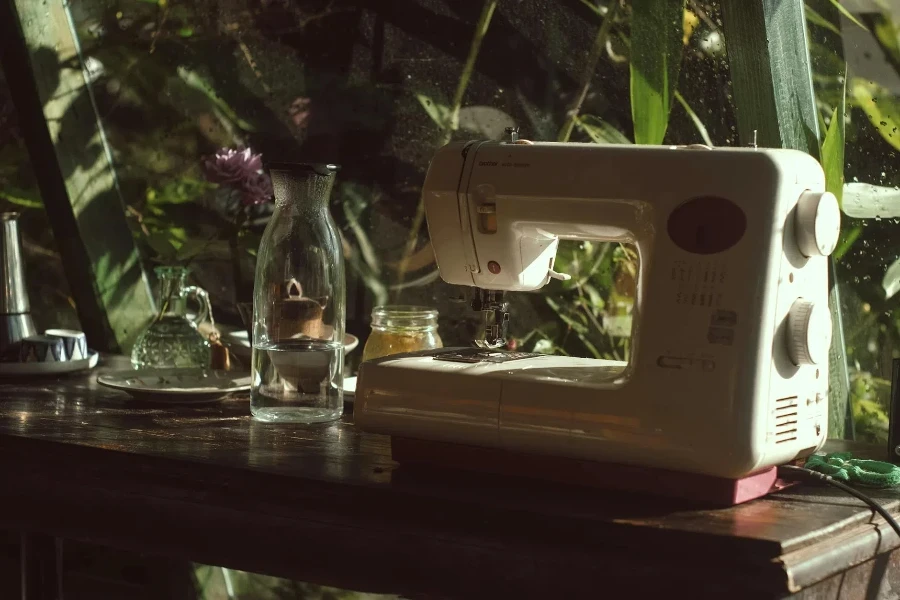
Durability and build quality are paramount when selecting a handheld sewing machine. A well-constructed machine not only ensures longevity but also provides a stable and reliable sewing experience. The materials used in the construction of the machine, such as the body and internal components, play a crucial role in its durability.
High-quality handheld sewing machines often feature metal frames and components, which provide strength and resistance to wear and tear. Plastic parts may be used in some models to reduce weight, but it’s essential to ensure they are made from durable, high-grade plastics that can withstand regular use.
The build quality also extends to the machine’s assembly and finish. A well-assembled machine with tight-fitting parts and a smooth finish is less likely to experience issues such as loose screws or misaligned components. Attention to detail in the manufacturing process reflects the overall quality and reliability of the machine.
Importance of Safety Standards and Certifications
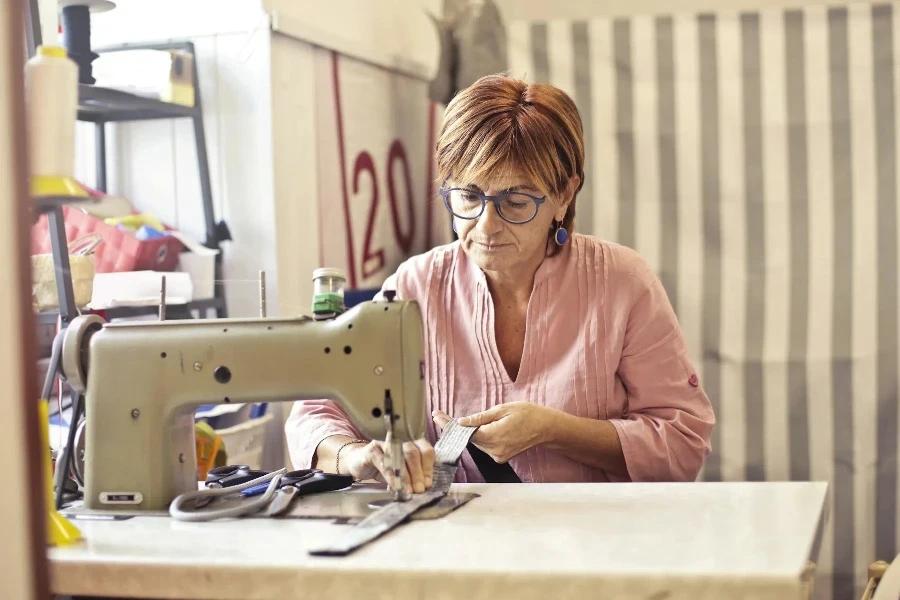
Safety is a critical consideration when choosing any electrical device, including handheld sewing machines. Ensuring that the machine meets established safety standards and certifications is essential for user protection and peace of mind. Look for certifications such as CE, UL, or CSA, which indicate that the machine has been tested and meets specific safety requirements.
Safety features such as automatic shut-off, overload protection, and finger guards can further enhance the machine’s safety. Automatic shut-off mechanisms prevent the machine from running when not in use, reducing the risk of accidents. Overload protection safeguards the motor from damage due to excessive strain, while finger guards protect users from accidental needle pricks.
Latest Technology Features in Handheld Sewing Machines
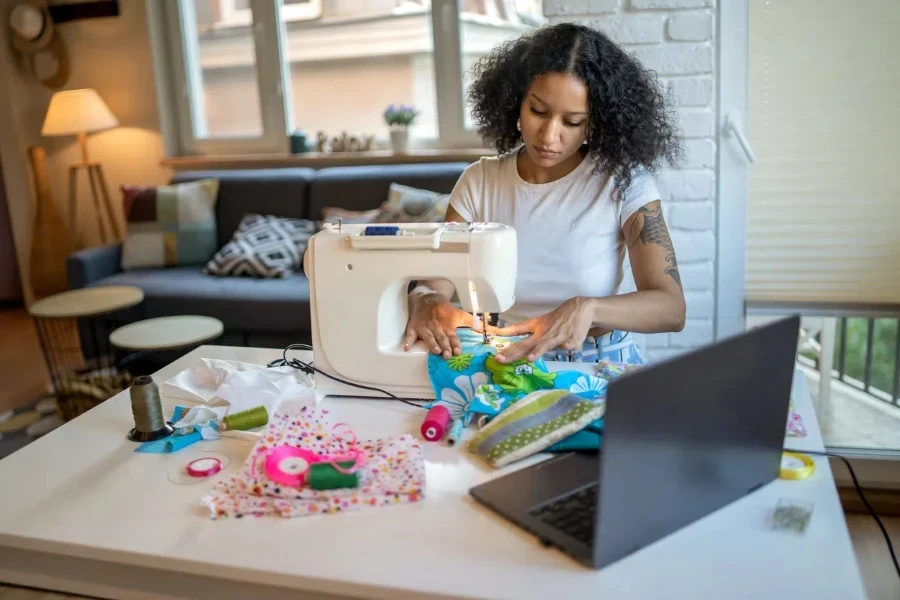
The integration of advanced technology features can significantly enhance the functionality and user experience of handheld sewing machines. Modern machines may include features such as digital displays, programmable stitch patterns, and connectivity options for software updates or design downloads.
Digital displays provide users with real-time information on stitch settings, battery life, and troubleshooting tips. Programmable stitch patterns allow users to save custom stitch sequences, making it easier to replicate complex designs or repetitive tasks. Connectivity options, such as USB ports or wireless connectivity, enable users to download new patterns or firmware updates, ensuring their machine stays up-to-date with the latest features and improvements.
Assessing the Price Range and Budget Considerations
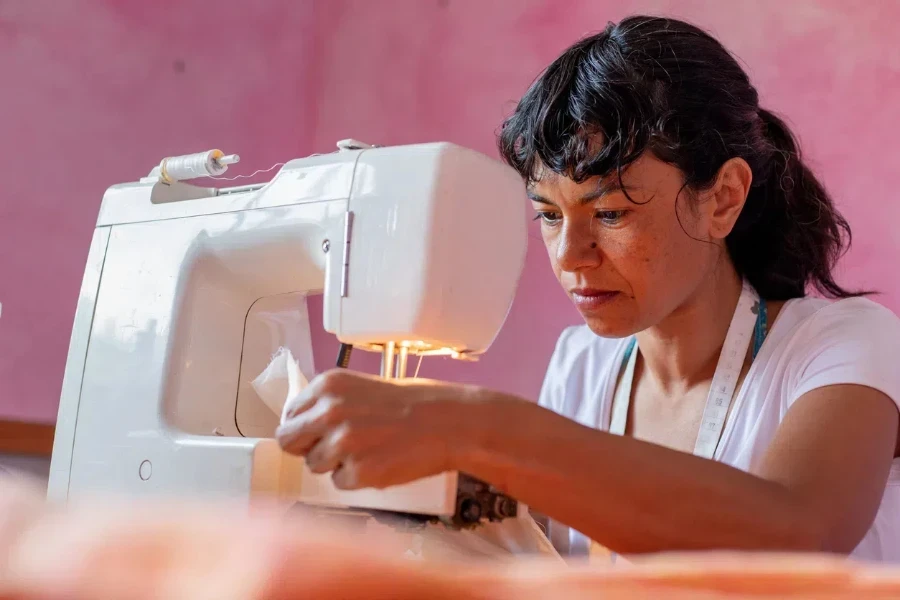
Handheld sewing machines are available at various price points, catering to different budgets and needs. It’s essential to assess the price range and determine the best value for your investment. While budget models may offer basic functionality, higher-end models often come with additional features and better build quality.
When evaluating the price, consider the long-term value and potential cost savings. Investing in a high-quality machine may result in fewer repairs and replacements, providing better value over time. Additionally, consider any included accessories or warranties that may enhance the overall value of the machine.
Conclusion
Selecting the right handheld sewing machine involves careful consideration of various factors, including types and styles, performance and functionality, design, technical specifications, and ease of use. By evaluating these aspects and understanding the importance of durability, safety standards, advanced technology features, and budget considerations, users can make an informed decision that meets their sewing needs and preferences.





 বাংলা
বাংলা Nederlands
Nederlands English
English Français
Français Deutsch
Deutsch हिन्दी
हिन्दी Bahasa Indonesia
Bahasa Indonesia Italiano
Italiano 日本語
日本語 한국어
한국어 Bahasa Melayu
Bahasa Melayu മലയാളം
മലയാളം پښتو
پښتو فارسی
فارسی Polski
Polski Português
Português Русский
Русский Español
Español Kiswahili
Kiswahili ไทย
ไทย Türkçe
Türkçe اردو
اردو Tiếng Việt
Tiếng Việt isiXhosa
isiXhosa Zulu
Zulu